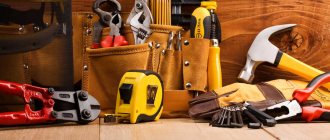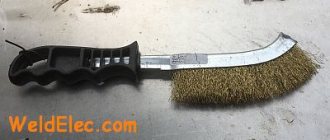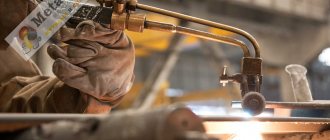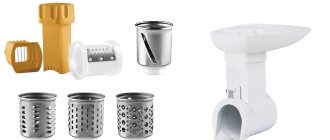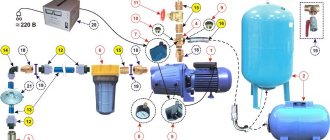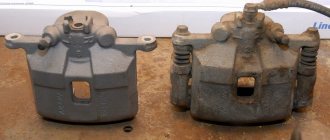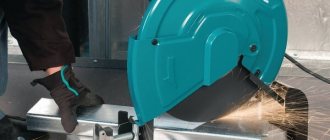Types of hydraulic shears
Depending on the work performed, hydraulic shears are divided into several types:
- hydraulic shears for primary destruction (hydraulic shears for dismantling, or crushers) carry out the demolition of buildings and structures, dismantling structures, breaking reinforcement and welded connections;
- hydraulic shears for concrete (concrete breakers, hydraulic shears for recycling) are used for grinding reinforced concrete debris and floors remaining after the initial destruction;
- hydraulic shears for metal, used for cutting metal structures (beams, profiles, rods, cables) and separating connected metal elements;
- hydraulic pruning shears for trees, or hydraulic shears for trees;
- Rail breakers are specialized equipment for cutting rail structures.
It is worth mentioning separately about multiprocessors. These are universal hydraulic shears with quick-release jaws that allow you to change jaws depending on the tasks at the site. Thus, multiprocessors become the ideal solution for any type of dismantling: from primary demolition and destruction of concrete to cutting reinforcement and metal.
Video: Hammer DSP-30 hydraulic shears
Kinds
Metal scissors come in the following types:
- Cutting machines are high-power stationary equipment, the hydraulic drive of which is connected to a compressor. Allows you to perform all types of cutting of metal parts of any complexity, as well as cutting.
- Manual hydraulic shears are a compact tool that allows you to cut thin sheets of steel, rods, and fittings. Unpretentious in work, easy to maintain.
- Guillotine - suitable in terms of power and compact size for use in workshops or small-scale production of metal products. Allows you to perform quick cutting and create smooth seams.
Lever and guillotine tools are used only for cutting along a straight line. Hand scissors are suitable for cutting complex shaped parts.
By blade location:
- Rights. They have a green marking. Designed to work with the left hand and create a right bend. When cutting, the right blade goes under the workpiece.
- Left. Marked in red. When cutting metal sheets, the left blade goes under the workpiece.
By blade type:
- symmetrical;
- asymmetrical.
Asymmetrical designs are twice as expensive as symmetrical ones, so they are quite difficult to find on sale. When working, they are quite convenient, since they allow better control of the cut, and it is more convenient to fix them in space.
According to manufacturing technology:
- cast - characterized by low strength, low reliability, and fairly fast grinding of blades;
- forged - wear-resistant, durable, universal in use, and have a long service life.
According to the design form:
- open;
- edge;
- guillotine.
In cutting direction:
- checkpoints;
- curly;
- universal.
Guillotine shears for metal
Device and design
Hydraulic shears have a body and jaws (or, as they are also called, cutting-breaking parts) are attached to it. The jaws are driven by one or two hydraulic cylinders. The number of hydraulic cylinders depends on the shear model. Hydraulic shears with two hydraulic cylinders have a higher destruction efficiency, since in this case the jaws act on the material being destroyed from both sides.
The jaws, in turn, have two parts - destructive and cutting. This makes it possible to carry out all dismantling operations in a single technological cycle.
The cutting elements of the hydraulic shears are removable, which makes it easy to replace them in case of wear.
Drawing and diagram of hydraulic shears
Tool selection rules
Criteria for choosing metal shears:
- tool power;
- scope of application;
- maximum thickness of the metal being cut;
- compactness, weight;
- degree of protection from negative environmental factors;
- manufacturer, cost of the model of interest;
- functionality - what kind of metal shearing press is used;
- design of the unit used.
Rules for choosing hacksaw blades:
- absence of damage, cracks, chips, or traces of rust on the surface;
- the strength of the material is higher than that of the metal being cut;
- the length is determined by markings or based on the design features of the scissors and their power;
- corrosion resistance;
- The shape of the teeth is selected based on the type of work being performed and the characteristics of the metal being cut.
What kind of oil is used in hydraulic shears?
Most often, the manufacturer requires the use of hydraulic oil and lubricants having the following characteristics:
- Hydraulic oil HLP46, meeting DIN 51524 Part 2 / ISO VG 46.
- An alternative is HEES biodegradable hydraulic oil in accordance with ISO 15380 or OECD 301 B.
- A general purpose grease EP2 in accordance with DIN 51825 - KP2K-20 / ISO L-XBCHB 2 is also required.
Never mix different types of hydraulic fluids. If you are in doubt about the performance of the hydraulic oil or grease, replace it completely. The percentage of unsuitable oil (especially when it comes to mineral oil) should not exceed 2%.
Possible faults
- The required pressure is not created in the tool.
- You may have insufficient oil in the tool and need to top it up;
- The hydraulic system is clogged, the oil should be changed;
- The pressure release lever is not closed; therefore, it should be closed;
- The rod does not return to its initial position.
- The return system is worn out and the return spring will need to be replaced;
- Oil leaks
- The seals have become unusable and should be replaced
Video about hydraulic metal cutting shears
Power-assisted hydraulic shears
Hydraulic hand shears are the most popular because they can be used to cut any material. Their design makes it possible to evenly distribute the applied force on the metal, and are characterized by power and small size at the same time. Guillotine shears are suitable for cutting rods and wire. Scissors are often used in production.
KVP NGO
Open type tool for cutting reinforcement, rolled metal, and profiled metal pipes. They are larger and heavier than guillotine tools. The cutting force applied is less, but due to the ability to open the blades, the ability to cut any material appears. Hydraulic shears NGO 100 can cut a profile with a cross-section of about 100 mm.
Hydraulic shears for firefighters and hydraulic shears for rescuers are used by the respective services. The tool does not require special skills in handling and handling. It is simply connected to a hydraulic pump and the profile is captured.
NG
A tool with knives arranged like a guillotine. Such tools are mainly used for cutting wire, rope, and cable. Used for cutting cables, ropes and wires. The quality of the cut is high, especially for thick cables. During the cutting process, the wires are fused together under the pressure of the blades.
Note. These types differ in the design of the hydraulic drive and the blade closing pattern.
Video about hydraulic metal shears 25 mm
The design of hydraulic open shears allows them to be used in construction and logging. A hydraulic grab of great power, which is mounted on a tractor of enormous weight, cuts concrete, trees, and metal of any kind with equal dexterity. The weight-to-effort ratio gives excellent results. Household hydraulic shears can last 3 to 4 years if handled well. A tool for professional use can make 3 thousand cuts, then you need to change the seals and valves of the hydraulic system.
How to choose hydraulic press shears?
When choosing scissors for household use, you need to take into account the purpose. Prices in stores for instruments vary greatly. The cost of manual models ranges from 50 to 2000 rubles. The price of hydraulic shears reaches 20 thousand rubles.
When purchasing, take into account:
- location of cutting blades;
- shape of knives;
- cutting ability;
- power;
- convenience and safety in work;
- presence of protection;
- the ability to quickly change the position of the tool during operation.
Experts recommend not to spend money on an expensive tool if you need to do a single job. Hand-held metal shears are suitable for such purposes. Hydraulic shears are good for large volumes of work and for more serious material.
The best rebar shears (bolt cutters)
Rebar shears are designed for cutting bolts, rods and reinforcement due to large levers that convert forces from manual squeezing by the operator. The longer the lever, the more powerful the pressure.
KNIPEX KN-7182950
Rating: 4.8
In first place in this rating category is a product from the German company Knipex. The bolt cutter comes in a red color that is easily distinguishable among building materials, so it is easy to find on site. Experts in reviews praise it for its thick handles, which soften the pressure from the levers during operation. The metal part is made of chrome-vanadium alloy and has a rod thickness of 11 mm. The material was additionally oil-hardened to increase strength. The hardness of the cutter is 62 HRC, which not all competitors demonstrate. The cutting part can be set according to the opening width in 12 different positions, which increases productivity during the same type of manipulation.
Our experts included the model in the rating due to the special shape of the headband. Unlike other metal scissors, these cutting jaws are designed for lateral insertion of the part. This makes it easier to use in narrow places, since the master needs to position them not perpendicular to the plane, but parallel. This option is great for working with rolled meshes.
Advantages
- powerful handles, diameter 11 mm;
- flat design of jaws and hinge;
- the metal body is powder coated;
- thick two-component handles.
Flaws
- high price;
- inconvenient to carry around the construction site due to its size;
- weight 4.11 kg tires your hands faster;
- The coating of the handles allows electric current to pass through.
STAYER 2330-090 900 mm
Rating: 4.7
In second place in the ranking are products from the Stayer brand, owned by the German corporation Kraftool. The tool is capable of cutting through non-hardened steel (HRC 20) with a cross-section of up to 1.6 cm in one click. In the case of hardened rods (with a strength of HRC 30), the scissors will cut through a cross-section of up to 1.1 cm. To ensure such strength of the blades, the tool steel was hardened with high-frequency currents. Great force is possible due to the long arms of 90 cm.
We highlighted this model in the rating as the most powerful and suitable for harsh construction conditions. The bolt cutter will cope with thick reinforcement without damaging the jaws. Craftsmen, judging by the reviews, like their reinforced connector, which extends the life of the product despite regular loads. The headband is phosphated, so you can use it in the rain or in damp weather without fear of ruining the expensive device.
Advantages
- there are holes in the handles for tying the lace;
- stop-limiter so as not to crush your fingers;
- adjustment of the degree of closure of the jaws;
- additional coating against corrosion.
Flaws
- weight 5 kg;
- large dimensions;
- high price;
- a perpendicular approach to the part is required (enough space is required).
Operating rules
To extend the service life of the tool, it is important to follow the basic operating rules:
- the tool and cutting part must be kept clean;
- oil changes are carried out at least once every six months;
- Before storage, scissors should be cleaned and lubricated with an anti-corrosion compound;
- during operation, the thickness of the metal being cut should not exceed the standards stated by the manufacturer.
Possible faults
The main malfunctions of hydraulic tools for metal are:
- the rod does not return to the neutral position - the return spring must be replaced;
- no or insufficient oil pressure - requires changing the oil, closing the lever to relieve excess pressure or cleaning the hydraulic drive;
- There are oil smudges on the outside - the seals need to be replaced.
To avoid various breakdowns, you must follow the operating rules of the tool described in the technical data sheet. Before use, the tool must be checked for defects.
